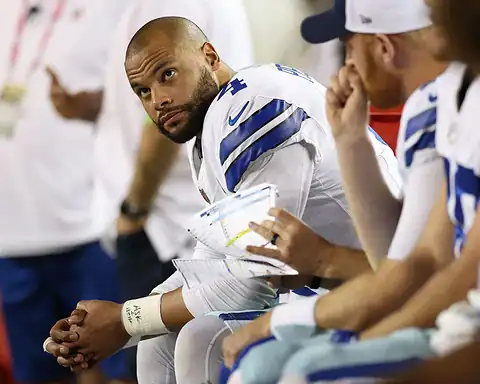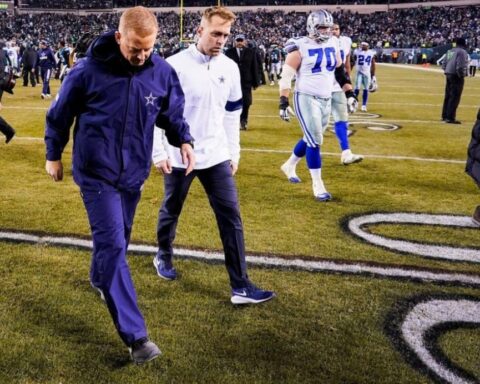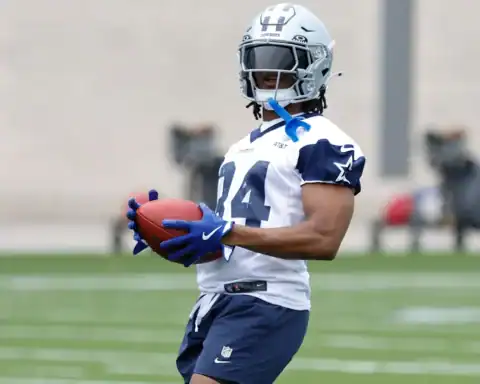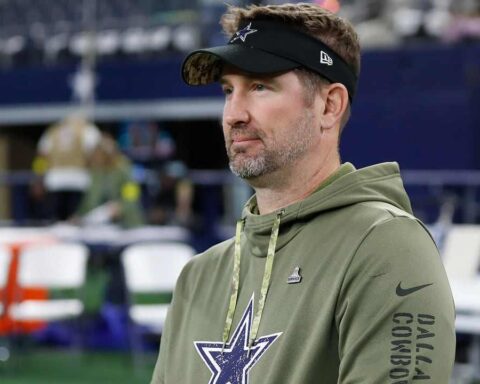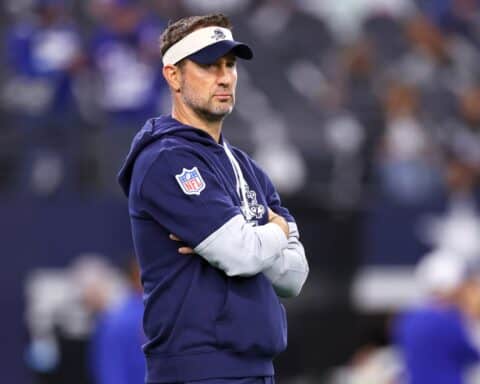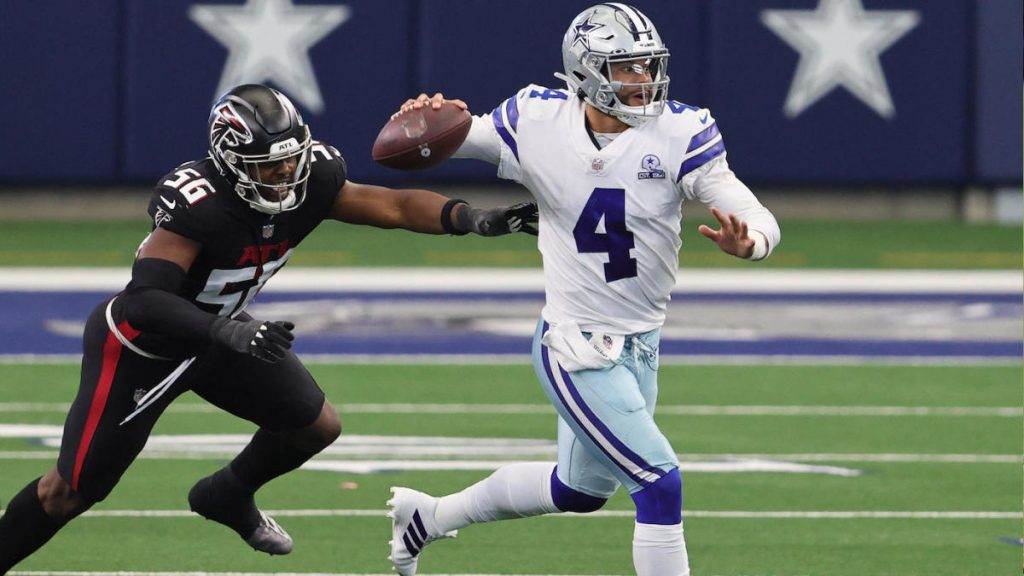The 2018 NFL season has come to an end for the Dallas Cowboys. The Los Angeles Rams were simply the better team on Saturday night in the Coliseum and it showed in the 30-22 loss. While it was a disappointing performance, there were several things to take away from the game to give us reason for optimism moving forward. Connor Williams played well against Aaron Donald and Ndamukong Suh on the interior, Dak Prescott kept the team in the game despite little help from the running game, and Head Coach Jason Garrett perhaps coached his best game from a management point of view.
After the first drive, this game had one of those, if the Dallas Cowboys have to punt, it’s likely going to be a loss feels. The defense’s inability to force more than one punt or create a turnover was going to make it really difficult for the offense to keep up, and yet at the end of the game, the Cowboys were within a score and had a shot to win. Dak Prescott deserves a lot of credit for that, but so does Jason Garrett.
Here’s why.
4th and 1’s
Jason Garrett has long been viewed as a conservative coach in the NFL, and this season he didn’t do much to help his reputation, but that game on Saturday should change some of that perception. On a night where it looked like his defense didn’t have it, he called the game he needed to maximize his team’s possessions.
On the opening drive of the game for the offense, the Cowboys got to the Rams 49 yard line, but faced a 4th and 1. Garrett didn’t waste any time going for it and the Cowboys were able to convert on Ezekiel Elliott’s five yard run. A Marcus Peters’ unneccessary roughness penalty gave the Cowboys an extra 15 yards and the Cowboys scored on the next play on Amari Cooper’s 29 yard catch and run to give the Dallas Cowboys the lead.
It would be their only lead of the night.
Again, in the second half, the Cowboys faced a 4th and 1, this time it was at the Rams 41 yard line and this time, the Cowboys were down 23-7. This was not nearly as difficult a decision as the Cowboys were in catch up mode and needed to get a score to bring the game within striking distance, and they did just that. Again, Elliott picked up five yards when the Cowboys needed one and Elliott capped off th drive with a one yard touchdown run after Michael Gallup’s long reception on a broken play.
At the Rams 35 yard line and the game within reach, the Cowboys went for it again on fourth down, but this time were stopped short of the first down marker when Ndamukong Suh made an excellent play to prevent Elliott from picking up the yard. On the play, you can see Suh start to Joe Looney’s left, which forced Elliott to go to Looney’s right and Suh followed Elliott into the hole. There was much Looney could do as Suh had the necessary leverage to make the play. It was absolutely the right call to go for it in that situation, but the Cowboys went to the jumbo formation-Elliott inside run one too many times. It was clear where the ball was going to go in that situation, and they were stuffed.
On what turned out to be the final drive of the season for the Dallas Cowboys, they needed to score and score rather quickly to have a chance to get the ball back one more time. The offense scored, but took a little too much time doing so as the drive took just over five minutes off the game clock. Again, on the drive, they were faced with a fourth and 1, but this time they used Dak Prescott and Ezekiel Elliott on a speed option to the right and they were able to convert and eventually get the touchdown.
For the game, the Dallas Cowboys went three for four on fourth down attempts.
Point After Decisions
In the middle of the third quarter, the Dallas Cowboys scored to make it 23-13. Generally in the NFL, teams don’t go for two until they have to go. Knowing that possessions were going to be few and far between the Cowboys were likely going to have to score on every possession the rest of the game, Garrett went for two and the Cowboys converted to make it an eight point game.
Then after the Dallas Cowboys scored to make the game 30-21, there was much discussion on social media on whether the Cowboys should have gone for two there or just kicked the extra point, which was a bit surprising.
To me, it was simple. Kick the extra point to make it 30-22 and hope your defense gets you the ball back and you can score again. If you go for two in that situation and don’t make it, the game is essentially over with just over two minutes remaining. Taking the extra point kept you in the game, even if it was still only a slight chance to pull out a win.
Declining Penalties
With about 3:20 to go in the third quarter, the Dallas Cowboys defense faced a third and two situation around midfield against the Rams. They were able to force Rams Quarterback Jared Goff into a hurried throw and he overthrew Josh Reynolds in the flat for what would have been a first down.
On the play there were two penalties, offensive holding and offensive pass interference and Jason Garrett declined the penalties.
To me it was one of the boldest coaching decisions has made in his career on something that seemed very innocuous.
Sean McVay and the Rams were having their way with the Dallas Cowboys defense as Todd Gurley and C.J. Anderson gashed their way to over 100 yards rushing each. With the Rams facing a fourth and two on the Dallas Cowboys side of the 50 yard line, most people thought the Rams would go for it there and completely steal the soul of the Dallas Cowboys.
Johnny Hekker did his best to get the Dallas Cowboys to think he was going to run a fake, but the Cowboys never panicked and stayed onside as the punter attempted to game them.
It was a huge call in that situation. If Garrett accepts the penalties, the Rams would have faced a third and 12 at their own 43 yard line, but would have had another opportunity to convert the first down and extend the drive.
I really liked the call, because it put McVay in a difficult position himself. If the were to go for it and fail to convert on fourth down, the Cowboys would have gotten the ball at about midfield with a chance to tie the game.
Kicking Deep vs Onside Kick
With the new rules governing kickoffs, mainly that teams have to keep a amount of players on each side of the kicker, onside kicks have become less and less successful in today’s NFL. Even before the rule changes, recovering an onside kick was less than a 50/50 proposition.
Kicking deep was really the only decision to make. The hope is that your defense is able to get a stop and the Cowboys would get the ball back with decent field position.
And it nearly worked.
The Dallas Cowboys run defense came up big on first and second down, holding the Rams running game to three yards setting up a third and seven. Just as everyone was expecting the Rams to throw it, they ran a play action with a naked bootleg that left Jared Goff all alone on the outside with a ton of room to run, and zero Cowboys in position to prevent him from picking up the first down.
Ball game.
✭ ✭ ✭ ✭ ✭
On Saturday, Ian Rapoport from NFL Network, reported the Cowboys were looking to extend for Jason Garrett this offseason. It should come as no surprise as he helped orchestrate an impressive turnaround from 3-5 to 10-6 and NFC East champions all while fielding one of the youngest teams in the NFL. Jason Garrett has grown a lot as an NFL head coach and in the playoff loss, made excellent decisions to keep the Cowboys in the game. He’s going to be around here for a long time and there should be a lot of optimism heading into 2019 that the Cowboys can make some strides.




